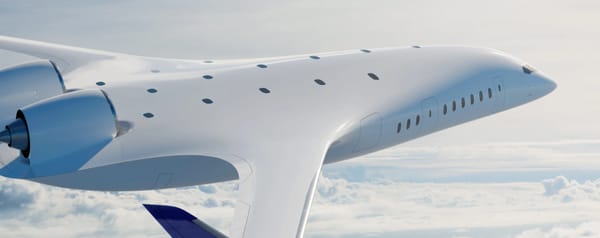How Airlines Use Artificial Intelligence and Data Science in Operations
The aviation industry has experienced a rapid transformation in recent years, driven by artificial intelligence (AI) and data science advancements. These cutting-edge technologies have played a crucial role in improving air travel’s efficiency, safety, and customer experience.
This article explores how airlines use AI and data science to optimize their operations, reduce costs, and enhance passenger satisfaction.
[wpsm_titlebox title=”Contents” style=”1″][/wpsm_titlebox]
Optimizing flight scheduling and route planning
One of the most significant applications of AI and data science in the aviation industry is optimizing flight scheduling and route planning. Airlines need to consider numerous factors, such as weather conditions, air traffic control restrictions, and fuel efficiency, when planning their flight routes and schedules.
Advanced algorithms and predictive analytics enable airlines to process vast amounts of data to create the most efficient flight schedules and routes. Machine learning models can consider historical data and real-time information, such as weather patterns and airport congestion, to make accurate predictions and optimize flight planning.
For example, Southwest Airlines uses AI-powered route optimization tools to create fuel-efficient flight paths that can save $100 million in fuel costs annually.
Similarly, Lufthansa has adopted AI-driven route optimization solutions that have significantly saved time and fuel consumption.
Improving aircraft maintenance
AI and data science have revolutionized aircraft maintenance by enabling airlines to shift from reactive to predictive maintenance. Predictive maintenance involves analyzing historical and real-time data from aircraft sensors to identify potential issues before they become critical, reducing downtime and maintenance costs.
For instance, Airbus’s Skywise platform uses machine learning algorithms to analyze vast amounts of data from aircraft sensors and maintenance records. This information allows airlines to predict potential failures and schedule maintenance more effectively, reducing aircraft downtime and operational costs.
Similarly, Rolls-Royce’s IntelligentEngine program leverages AI and data analytics to monitor engine performance and predict maintenance needs. This proactive approach to maintenance helps airlines minimize disruptions and improve overall fleet performance.
Enhancing customer experience
Airlines are increasingly using AI and data science to improve customer experience and satisfaction, from personalized marketing to optimized customer service.
AI-powered chatbots and virtual assistants have become popular for airlines to provide instant, 24/7 support to passengers, addressing common queries and concerns without human intervention.
For example, KLM Royal Dutch Airlines introduced “BlueBot,” an AI-driven chatbot that can assist customers with booking flights, managing reservations, and providing travel information.
Airlines also use AI-powered tools to analyze customer data and deliver personalized marketing content, promotions, and product recommendations based on individual preferences and travel history. This targeted approach improves customer satisfaction and increases the likelihood of repeat bookings and loyalty.
Streamlining airport operations
AI and data science have also been instrumental in streamlining airport operations, such as passenger and baggage processing, security screening, and resource allocation. One notable application is biometric facial recognition technology, which has been implemented in numerous airports worldwide to expedite the check-in and boarding process.
For example, Delta Air Lines has implemented facial recognition technology at several airports, including Atlanta and Detroit, enabling passengers to move through check-in, security, and boarding without the need for physical documents. This not only saves time but also reduces the potential for human error in document processing.
AI-driven tools can also optimize airport resource allocation, such as gate assignments and ground service equipment, by analyzing real-time data on flight schedules, aircraft types, and passenger volumes. This helps airports to minimize delays, reduce operational costs, and improve overall efficiency.
Optimizing crew scheduling and management
Crew scheduling and management is a complex process for airlines, involving factors such as labor regulations, crew preferences, and operational requirements. AI and data science have enabled airlines to create more efficient and cost-effective crew schedules, improving both employee satisfaction and operational performance.
For instance, Qantas uses AI-powered optimization algorithms to create crew schedules that adhere to regulatory requirements, minimize fatigue, and accommodate employee preferences. This enhances employee satisfaction and reduces costs associated with last-minute changes and disruptions.
Similarly, British Airways has employed Maestro Lines from Boeing’s SBS International to optimize crew scheduling, considering factors like crew qualifications, route patterns, and rest requirements. These advanced algorithms have significantly improved crew utilization and operational efficiency.
Enhancing in-flight services and entertainment
AI and data science are also being used to improve in-flight services and entertainment, offering passengers a more personalized and enjoyable experience. By analyzing customer data, airlines can tailor in-flight entertainment options and meal choices to individual preferences, increasing passenger satisfaction and loyalty.
For example, Emirates has partnered with the AI-driven content management platform, Spafax, to deliver personalized in-flight entertainment recommendations based on a passenger’s travel history and preferences. This targeted approach ensures that passengers have access to content that appeals to their interests, enhancing their overall travel experience.
Similarly, Singapore Airlines uses AI-powered tools to analyze customer feedback and preferences, enabling the airline to make data-driven decisions about in-flight meal offerings and service improvements.
Conclusion
The adoption of artificial intelligence and data science in the aviation industry has led to significant improvements in operational efficiency, cost reduction, and customer experience. From optimizing flight scheduling and route planning to enhancing aircraft maintenance and streamlining airport operations, these cutting-edge technologies are revolutionizing the way airlines operate.
By leveraging AI-driven tools and data-driven insights, airlines can better understand and meet their passengers’ needs, offering a more personalized and enjoyable travel experience. As the industry continues to embrace these innovations, we can expect further advancements in the quality and efficiency of air travel, benefiting both passengers and airlines alike.





